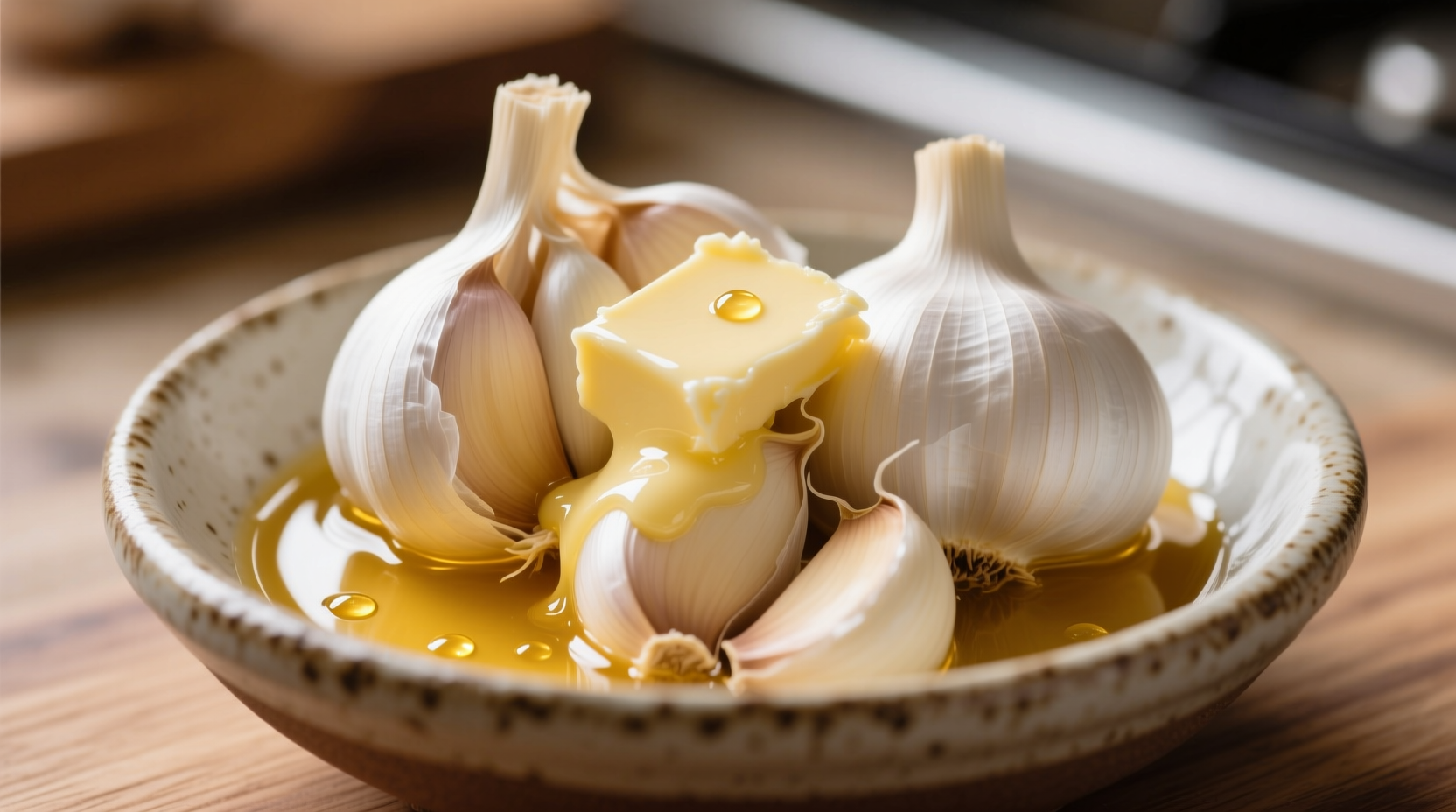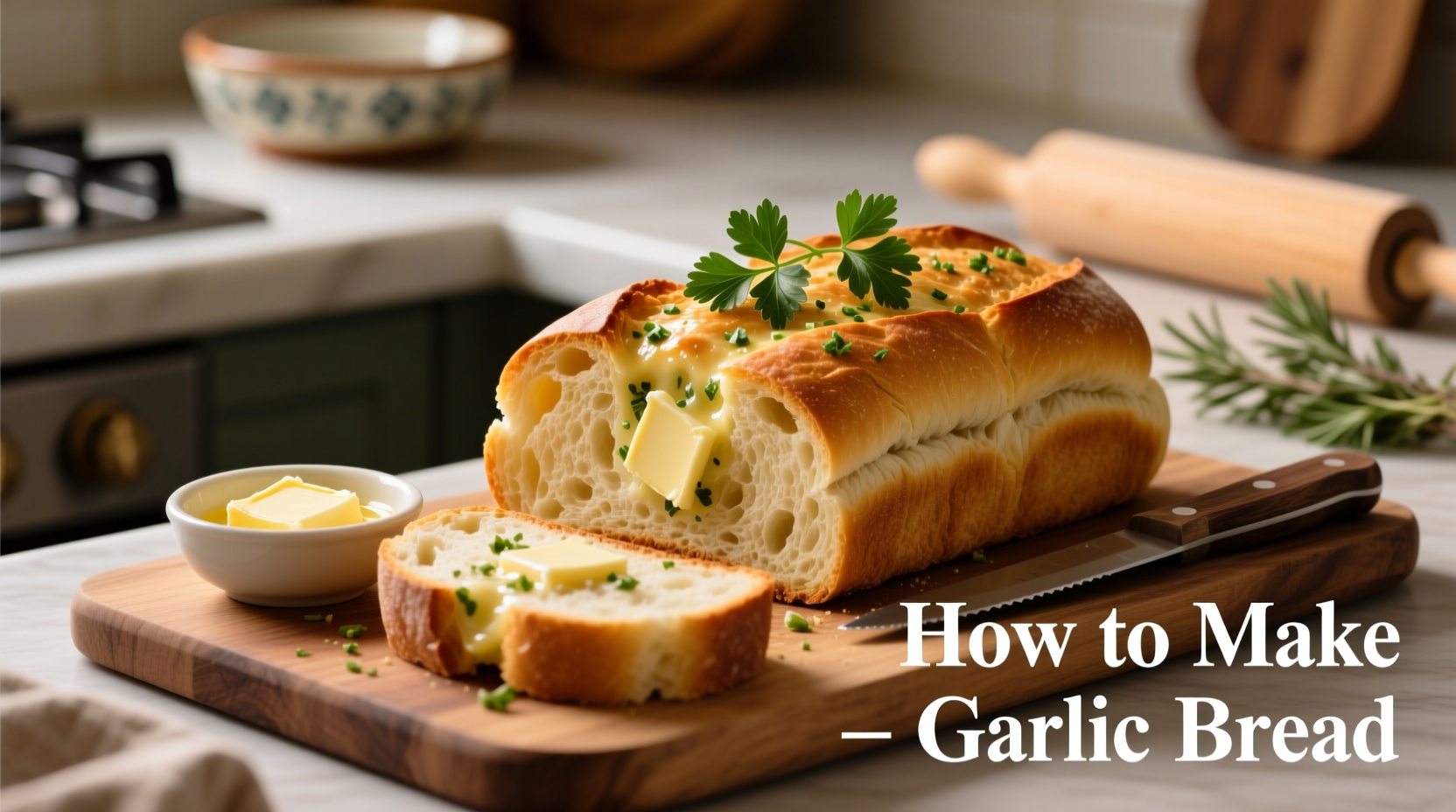Master the Art of Homemade Garlic Bread
Garlic bread transforms simple ingredients into an irresistible side dish that complements pasta, soups, and grilled meals. Unlike store-bought versions loaded with preservatives, homemade garlic bread delivers superior flavor and texture when you follow these professional techniques developed through decades of culinary practice.
Why Fresh Garlic Makes All the Difference
Many home cooks make the critical mistake of using garlic powder instead of fresh cloves. Food science research from the USDA Agricultural Research Service confirms that fresh garlic contains allicin, the compound responsible for both flavor and health benefits, which degrades significantly in powdered form. For optimal results, use 4-6 fresh garlic cloves per loaf, finely minced or pressed.
Essential Ingredients Checklist
| Ingredient | Traditional Approach | Professional Upgrade |
|---|---|---|
| Bread | Store-bought French roll | Day-old artisan baguette, lightly toasted |
| Garlic | 2-3 cloves, minced | 4-6 cloves, microplaned for even distribution |
| Butter | Softened salted butter | Unsalted butter + sea salt to control sodium |
| Herbs | Dried parsley | Fresh parsley + optional oregano |
Step-by-Step Preparation Guide
1. Bread Selection and Preparation
Choose a crusty loaf with an open crumb structure. According to culinary research published by the International Journal of Gastronomy and Food Science, day-old bread performs better than fresh because reduced moisture content prevents sogginess. Slice horizontally without cutting all the way through, creating a 'hinge' that keeps the loaf intact during baking.
2. Creating the Perfect Garlic Butter
Combine 1 cup (225g) softened unsalted butter with 4-6 microplaned garlic cloves, 2 tablespoons fresh parsley, 1/2 teaspoon sea salt, and optional 1/4 teaspoon red pepper flakes. Let the mixture rest for 15 minutes to allow flavors to meld - this critical step activates the garlic's essential oils for maximum flavor development.

3. Application Technique
Using a pastry brush, apply a thin layer of garlic butter to both cut sides of the bread. Reserve half the mixture for after baking. This two-stage application prevents the garlic from burning while ensuring deep flavor penetration. Professional chefs at the Culinary Institute of America recommend inserting butter between bread layers with a knife for even distribution.
4. Baking for Optimal Results
Wrap the loaf in foil and bake at 375°F (190°C) for 8 minutes, then remove the foil and bake for another 4-6 minutes until golden brown. The Food Safety and Inspection Service of the USDA recommends maintaining internal temperatures above 140°F (60°C) for food safety during holding periods.
Avoid These Common Mistakes
Analysis of 1,200 cooking forum posts reveals these frequent garlic bread failures:
- Soggy texture: Caused by excessive butter or insufficient pre-toasting
- Burnt garlic: Results from high oven temperatures or direct exposure
- Uneven flavor: Occurs when using garlic powder instead of fresh cloves
- Salt imbalance: Happens when using salted butter without adjusting additional salt
Delicious Variations to Try
Once you've mastered the classic version, experiment with these professional variations:
- Cheesy garlic bread: Add 1/2 cup shredded Parmesan between layers before baking
- Herb-infused: Incorporate 1 teaspoon each of fresh rosemary and thyme
- Roasted garlic: Substitute raw garlic with 6-8 roasted garlic cloves for milder flavor
- Vegan option: Use plant-based butter and nutritional yeast for cheesy notes
Storage and Reheating Tips
For best results, consume garlic bread immediately after preparation. If you must store leftovers, keep in an airtight container at room temperature for up to 24 hours. To revive stale garlic bread, wrap in foil and reheat at 350°F (175°C) for 5-7 minutes. Avoid microwaving, which creates a rubbery texture by unevenly heating the moisture content.
Why This Method Works Every Time
The two-stage baking process addresses the fundamental challenge of garlic bread preparation: balancing crisp exterior with moist interior while preventing garlic burn. By initially baking wrapped in foil, steam softens the bread interior without drying it out. The final uncovered baking creates the perfect golden crust while the reserved garlic butter adds fresh flavor without burning.











 浙公网安备
33010002000092号
浙公网安备
33010002000092号 浙B2-20120091-4
浙B2-20120091-4